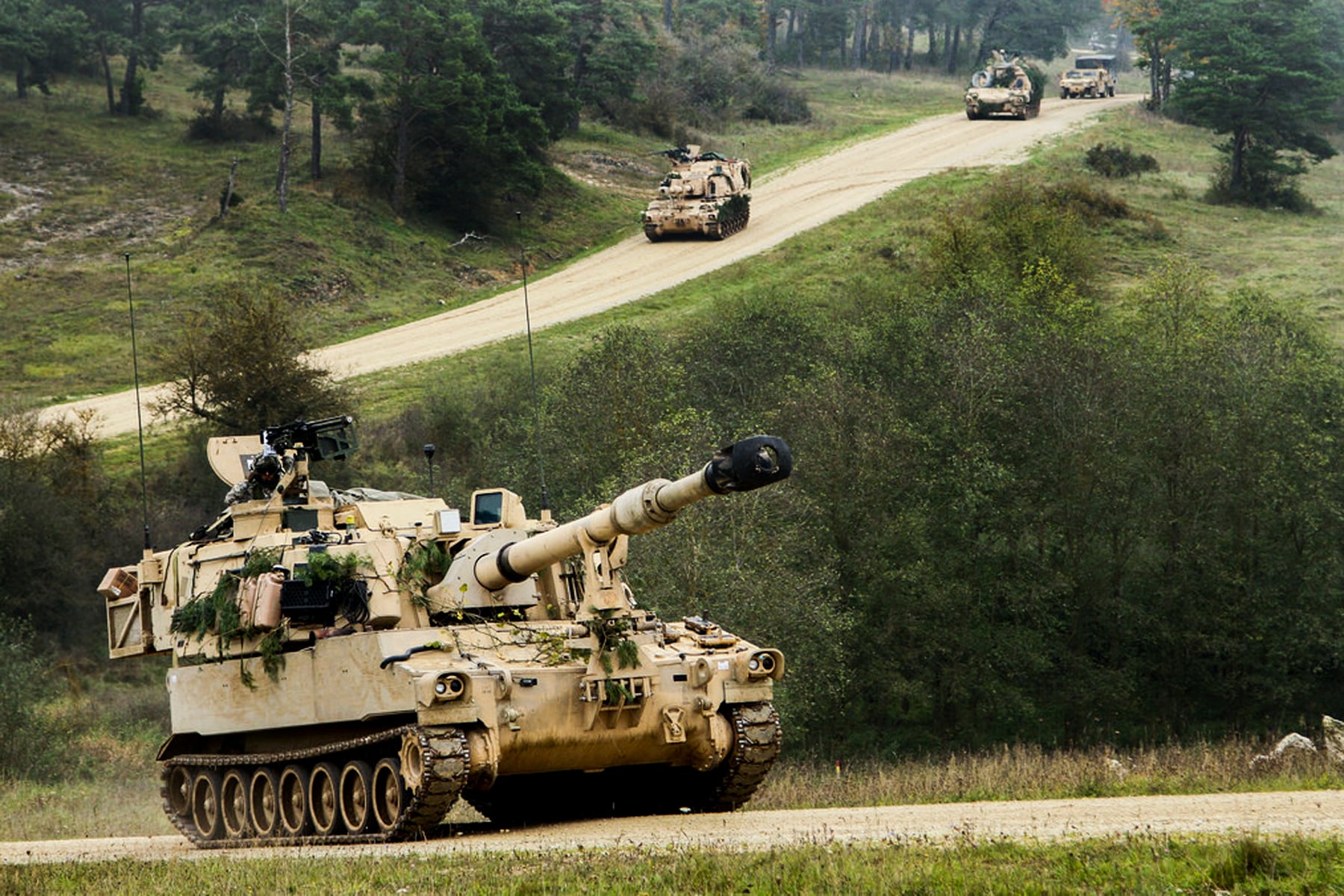WASHINGTON — Struggles with manufacturing the U.S. Army’s new armored vehicle and its modernized howitzer have set both programs up as low-hanging fruit for funding cuts in the service’s fiscal 2021 budget request.
Both the Armored Multi-Purpose Vehicle (AMPV) and the M109A7 Paladin Integrated Management (PIM) system are being build at BAE Systems’ York, Pennsylvania, production line.
The Army spent $445 million to buy AMPVs — the service’s M113 replacement — in FY20, but it plans to only spend $193 million — roughly half of that — in FY21, according to budget documents released Feb. 10.
In FY20, the Army indicated in its budget documents that it would buy 143 AMPVs in FY21. But now the service is only planning to buy 32. The total objective procurement requirement remains the same across the service’s five-year budget plan.
The PIM program also saw reductions over FY20. The Army plans to spend $436 million in FY21 after spending $553 million in FY20. The service, according to FY20 budget documents, planned to purchase 37 systems, but the new FY21 five-year plan shows the Army reduced the procurement number by seven. The objective requirement also remains the same, indicating the service intends to delay buying the systems rather than truncate the overall procurement.
RELATED

The AMPV program entered low-rate initial production, or LRIP, in January 2019. However, the program office indicated last year that delivery of the first LRIP vehicles would be delayed by two months and the completion of production qualification testing would be delayed by seven months due to tooling and assembly line challenges at York, according to a report released earlier this month by the Office of the Director of Operational Test and Evaluation.
DOT&E as well as Army Test and Evaluation Command identified deficiencies with the vehicle. According to the DOT&E report, there are 14 deficiencies that will be corrected prior to LRIP, and seven will be corrected after LRIP has begun but before the start of its initial operational test and evaluation expected in the third quarter of FY21. But that could be delayed by another four months.

The Army has been working to address breech reliability issues discovered several years ago during initial IOT&E events in 2017 and 2018, according to the DOT&E report, and it recalled 68 PIM LRIP vehicles for “complete teardown, inspection, repair and retesting” due to weld deficiencies in the BAE production process at York.
The service has delayed PIM’s full-rate production decision due to “production quality and capacity challenges” in the line, according to the report. But BAE has a plan to correct the problems, the DOT&E report notes.
The Army made clear during a FY21 budget briefing with Pentagon press on Feb. 11 that the cuts made to PIM and AMPV were not made just to make way for modernization priorities, but due to production challenges. Yet the benefit of having a slower procurement in both programs means more money can be moved toward the Army’s top six efforts to rapidly develop future capabilities.
John Daniels, the Army’s deputy assistant secretary for plans, programs and resources, said at the briefing, the cuts were due to “getting the production facility right-sized.”
The Army may have gone in with a bit too much “enthusiasm,” he said, when anticipating the rate vehicles would be coming off the line, but “then we found out there was some additional unforeseen issues in the industrial base to get the quantities right, so it was better to reduce.”
The service, therefore, took the opportunity to use the funding to pay other bills, Daniels said, “and to slow the production curve to get a little bit of time to get a better vehicle out.”
Even with the reductions and the production line challenges, Daniels said the AMPV program would only see about a six-month delay.
“It’s not going to be one of these things you figure out in a couple months, it’s going to be an iterative, every-year look at what is the right rate,” he cautioned.
“Once you get it up and running, what is the most effective and efficient way to run that line? The good news is you are running PIM and the AMPV through the same facility, so there is a bit of commonality there and also it’s going to consume a fair amount of production capability,” Daniels said. “So we have to look at what is the ramp-up cost if you want to go beyond what the line can currently do if everything is working correctly.”
Jen Judson is an award-winning journalist covering land warfare for Defense News. She has also worked for Politico and Inside Defense. She holds a Master of Science degree in journalism from Boston University and a Bachelor of Arts degree from Kenyon College.








